Lawrence R. Spencer's Blog, page 192
February 7, 2021
5 Year Old Girl — JOB 1st, MARRIAGE 2nd!
Republished by Blog Post Promoter
February 6, 2021
PSYCHOBABBLE
Republished by Blog Post Promoter

The word “psychology” means, literally: Psyche (The Spirit or Soul) + -ology (the study of). However, the so-called “science” of psychiatry is nothing whatsoever to do with Spirits or Souls. Instead it is a mind control operation funded primarily by governments, as developed, originally, by Nazi medical doctors working to exterminate the “undesirables” of human populations.
Here is a wonderful article about the current “thinking” and “innovation” of the “Priests of Modern Mental Science”. The Lords of Government Mind Control are working VERY hard to invent more new ways to confuse, befuddle and submerge our Immortal Spiritual Selves in a morass of mind-control double-speak, total bullshit, psychiatric chemicals and outright fantasy they pass off on the human population as “scientific fact”. These are the very beings that George Orwell warned us about in the book 1984. And, the very same “prison guards” described in the military transcripts published in the book Alien Interview.
These maniacs are behind every single school yard shooting massacre, every war, and every covert operation being run by every secret service activity on planet Earth. This report illustrates the mind-boggling nonsense of the “science of psychobabble”. Beware and avoid.
“What Are They Doing? My Visit to a Psychology Conference
(Reposted from Neatorama) Article by Alice Shirrell Kaswell, AIR Staff, Interpretive Illustrations by Marian Parry
“In April [1998], it was my privilege to attend the joint convention of the Western Psychological Association and the Rocky Mountain Psychological Association (WRMPA). The four-day event took place at the Albuquerque Convention Center, in Albuquerque, New Mexico. Wandering from room to room, I found many surprising and delightful things.
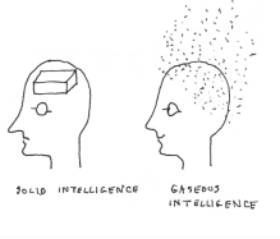 Terror
Terror
For me, the highlight of the convention was a lecture—a prestigious “invited presentation”—by Jeff Greenberg of the University of Arizona. The topic was “Managing the Terror of Being Human: Theory and Research”. The man knows his subject cold, as you can see from this description he wrote in the convention guidebook:
Biography
My terror began in the Bronx in 1954. It was amplified by my undergraduate experience at Penn and my graduate training at SMU and the University of Kansas. It has continued to grow over my 15 years at the University of Arizona.
Ignore the Face
I also enjoyed a lecture by Joseph J. Campos of the University of California at Berkeley. Campos raised the question, “Does the Face Really ‘Express’ Emotions?” His answer was a ringing No, “except under very special conditions.”
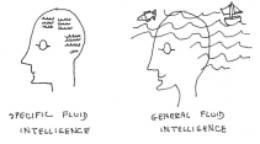 Fluid Meaning
Fluid Meaning
I accidentally touched off a minor incident the day after Georgia Tech professor Randy Engle gave a presentation on the topic “Working Memory Capacity, Controlled Attention and General Fluid Intelligence”. I asked nine experienced psychology professors to define the phrase “general fluid intelligence”. None of them could, although one did opine that “the lecturer probably knows what it means.”
Poster Sessions: Smells, Oils, a Princess, and Hair
Although there were many stimulating lectures, the most exciting action was in the poster sessions. In case you’ve never been to a poster session, I should explain the general idea. Dozens of student teams, and the occasional professor, each hung up a poster describing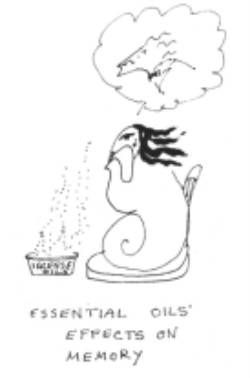 their recent projects. In each session, you can stroll the aisles and see anywhere from 20 to 50 or more posters.
their recent projects. In each session, you can stroll the aisles and see anywhere from 20 to 50 or more posters.
The first poster session, held on Thursday at 9:00 a.m., celebrated the general themes “Human Learning, Memory, and Cognition.” I was especially roused by three special posters: “Effects of Pleasant Ambient Odor on Memory Recall;” “Flash-bulb Memories for the Death of Princess Diana;” and “Essential Oils’ Effects on Memory.”
An 11:00 a.m. poster session concerned “Applied Psychology.” One poster discoursed on “The Effects of Odor and Stress on Mood.” Another, more abstruse, was entitled “Perceived Age of Teenage Females: Effect of Complexion, Makeup, Hairstyle, and Apparel.” I found it provocative.
A 1:00 p.m. poster session delved into “Social Issues”, and featured a gem of a poster called “The Influence of Male Facial Hair on Perceptions of Age.” It, too, must be described as provocative.
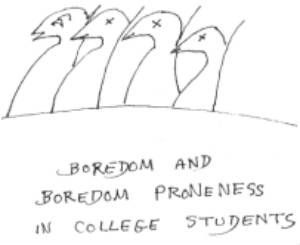 Boredom
Boredom
The convention was a multi-ring circus, with more simultaneous wonders than any one person could take in. Also at 1:00, but down the hall from the poster session, Mary B. Harris and Keith Zvoch of the University of New Mexico presented their paper on “Boredom and Boredom Proneness in College Students.” Some members of the audience found it stimulating.
More Smells, Parking, and Arousal
Friday morning was lovely in Albuquerque, with pink and blue skies, comfy temperatures, and psychologists in every nook and cranny. The 10:00 poster session was all about “Brain Function and Sensory Process.” There was an impressively worded poster entitled “Anterior EEG Asymmetry and Odor Hedonics: Gender Effects”. Not far away, an anxious crowd perused a poster called “Human Foraging Strategies: Outcomes for Campus Parking.” A knot of students pored intently over a poster called “Arousal, Sleep, and Time Perspective in University Students.” Sadly, only a few of them even glanced at the poster with the most intriguing title: “Can a Rat Who Has Never Known Water Know Thirst?”
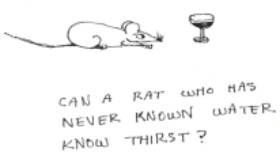 Smiles Different Similarities, Photos
Smiles Different Similarities, Photos
A noontime poster session on “Social-Personality Psychology” contained two special treats: “How Smiling and Pupil Dilation Affect Perceived Personality” and “Stereotype Reduction Through Similarity Differences.”
The noon hour also featured another prestigious “invited presentation” in the main ballroom. Roger S. Ulrich of Texas A&M University described his research on patients in surgical recovery rooms. As the patients emerge from their anesthetic haze, Ulrich shows them big color photographs of the great outdoors. If I understood him correctly, Ulrich said that this “improves health outcomes,” and that therefore his is actively marketing his services to hospitals and clinics.
At 1:20 in the same ballroom, the editor of the Annals of Improbable Research delivered another of the convention’s “invited presentations.” The topic was “Improbable Research and the Ig Nobel Prizes.” Curiously this was the only session in four days in which I saw people laughing. It began at 1:20 rather than 1:00 on the dot because the previous lecturer, Roger S. Ulrich, wouldn’t stop talking about how hospitals should buy his nature photos.
Punching, Dolls, and Car Characters
The Friday 1:00 poster session treated us to research on the following topics: “Boxer and Spectators: Perceptions and Characteristics of Pugilism”; “Body Satisfaction in Relation to Media Exposure, Self-Monitoring, and Barbie Doll Ownership”; “Effects of Descriptive Norms and Self-Awareness on Littering”; and my favorite of the day, “Car Color: An Indicator of Driver Personality.”
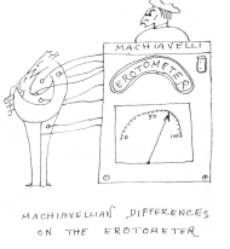 Sex, Sex, Paranoia, Hostility, and Sex
Sex, Sex, Paranoia, Hostility, and Sex
The Saturday early morning poster session delved further into the theme of “Social-Personality Psychology”. I saw a variety of interesting posters: “Situational Capture of Cardiovascular Arousal During an Erotic Episode”; “Machiavellian Differences on the Erotometer”; “Paranoia: Differences in Social Desirability”; and “Hostile Automatic Thoughts: A Validity Study.” Oh—and I shouldn’t forget to mention a crowd favorite: “Hair Stylists; Therapeutic Characteristics and Their Clients’ Levels of Self-Disclosure.” All in all, this session was a most interesting way to begin a Saturday.
And the 10:00 session was, if anything, even better. Its overall topic, “Stress and Coping”, was highlighted by two posters. The first, entitled “Sleep Quality and Anxiety Affect Distress Scores Measured During Finals”, was of special interest to students. The other, “Health Effects of the Interruption of an Emotional Writing Paradigm”, was of special interest to anyone who wanted to know what an Emotional Writing Paradigm is.
The noontime poster session dealt with “Education Psychology.” Three posters stood out from the bunch: “Introductory Psychology Activities Using Van Gogh as a Case Study”; “Predictors of Academic Procrastination in College Students”; and the dryly written yet riveting “Ethical Issues Involving Graduate Teaching Assistants.” A senior professor of my acquaintance saw me contemplating the “Ethical Issues” poster, and stage whispered “They should have called it ‘Can We Sleep Together?'”
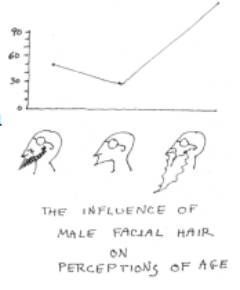 Simulating Boredom
Simulating Boredom
Saturday afternoon, Carl. N. Perlotto, M. Lyn Hoefer, and N. Clayton Silver of the University of Nevada at Las Vegas presented their paper “The Ludic Love Style: Difference in Sexual Boredom”. My courage failed me, so I did not attend their session.
I did manage to drop in, later, on the final poster session of the day, and so was able to learn about “Age-Related Differences in the Attentional Blink.”
Odor Ordinance, Ungrateful Dread, and Exeunt
Sunday, the final day of the convention, was a whirl of brunches and business card swapping. I caught Cheryl L. Asmus and Paul Bell’s 9:00 a.m. talk on “Post-Implementation of an Odor Ordinance,” and then zipped through the convention’s final poster session. It was there that I encountered the inspirational “Depressed Individuals Show No Gratitude.”
At that point I had to rush off to the hotel, grab my bags, and cab it to the airport, tired, laden with notes and trinkets, but grateful for the chance to have seen so many remarkable “psychological wonders”.
_____________________
This article is republished with permission from the September-October 1998 issue of the Annals of Improbable Research. You can purchase back issues of the magazine or subscribe to receive future issues, in printed or in ebook form. Or get a subscription for someone as a gift! Visit their website for more research that makes people LAUGH and then THINK.
INSTANT KARMA’S GONNA GET YOU
Republished by Blog Post Promoter
Instant Karma’s gonna get you
Gonna knock you right on the head
You better get yourself together
Pretty soon you’re gonna be dead
What in the world you thinking of
Laughing in the face of love
What on earth you tryin’ to do
It’s up to you, yeah you
Instant Karma’s gonna get you
Gonna look you right in the face
Better get yourself together darlin’
Join the human race
How in the world you gonna see
Laughin’ at fools like me
Who in the hell d’you think you are
A super star
Well, right you are
Well we all shine on
Like the moon and the stars and the sun
Well we all shine on
Ev’ryone come on
Instant Karma’s gonna get you
Gonna knock you off your feet
Better recognize your brothers
Ev’ryone you meet
Why in the world are we here
Surely not to live in pain and fear
Why on earth are you there
When you’re ev’rywhere
Come and get your share
Well we all shine on
Like the moon and the stars and the sun
Yeah we all shine on
Come on and on and on on on
Yeah yeah, alright, uh huh, ah
Well we all shine on
Like the moon and the stars and the sun
Yeah we all shine on
On and on and on on and on
Well we all shine on
Like the moon and the stars and the sun
Well we all shine on
Like the moon and the stars and the sun
Well we all shine on
Like the moon and the stars and the sun
Yeah we all shine on
Like the moon and the stars and the sun
THE FIRST OF ALL PLEASURES
Republished by Blog Post Promoter
François-Marie Arouet, known by his nom de plume Voltaire, was a French Enlightenment writer, historian and philosopher famous for his wit and for his advocacy of civil liberties, including freedom of religion, freedom of expression, free trade and separation of church and state. Voltaire was a versatile writer, producing works in almost every literary form, including plays, poems, novels, essays, and historical and scientific works. He wrote more than 20,000 letters and more than 2,000 books and pamphlets. He was an outspoken supporter of social reform, despite strict censorship laws with harsh penalties for those who broke them. As a satirical polemicist, he frequently made use of his works to criticize intolerance, religious dogma, and the French institutions of his day. Voltaire was one of several Enlightenment figures (along with Montesquieu, John Locke, Richard Price, Jean-Jacques Rousseau, and Émilie du Châtelet) whose works and ideas influenced important thinkers of both the American and French Revolutions. — http://en.wikipedia.org/wiki/Voltaire
February 5, 2021
MONA AMUSING
LIGHT SPEED ISN’T SO FAST
Republished by Blog Post Promoter
( THIS IS BLOG POST NUMBER 2,222 ON LAWRENCERSPENCER.COM ! )
In our terrestrial view of things, the speed of light seems incredibly fast. But as soon as you view it against the vast distances of the universe, it’s unfortunately very slow. This animation illustrates, in real time, the journey of a photon of light emitted from the surface of the sun and traveling across a portion of the solar system, from a human perspective.
However, if you travel at the SPEED OF THOUGHT you can cross the void of space in an INSTANT! For example: get the idea very clearly in your mind that you are ON the Moon and viola! you are there!! There is no speed or time or distance involved. Obviously, your body is not on the moon with you. But, we don’t THINK with our body. We think with our minds, which is not our body, or brain. It’s just YOU thinking…..
________________________________
Design & Animation: Alphonse Swinehart / http://aswinehart.com
GEORGE ORWELL’S FINAL WARNING
Republished by Blog Post Promoter
Nineteen Eighty-Four is a novel by George Orwell published in 1949. It is a dystopian and satirical novel about Oceania, a society tyrannized by The Party and its totalitarian ideology. The Oceanian province of Airstrip One is a world of perpetual war, omnipresent government surveillance, and public mind control, dictated by a political system euphemistically named English Socialism (Ingsoc) under the control of a privileged Inner Party elite that persecutes all individualism and independent thinking as thoughtcrimes. Their tyranny is headed by Big Brother, the quasi-divine Party leader who enjoys an intense cult of personality, but whom may not even exist. Big Brother and the Party justify their rule in the name of a supposed greater good. The protagonist of the novel, Winston Smith, is a member of the Outer Party who works for the Ministry of Truth (Minitrue), which is responsible for propaganda and historical revisionism. His job is to re-write past newspaper articles so that the historical record always supports the current party line. Smith is a diligent and skilful worker, but he secretly hates the Party and dreams of rebellion against Big Brother.
As literary political fiction and as dystopian science-fiction, Nineteen Eighty-Four is a classic novel in content, plot, and style. Many of its terms and concepts, such as Big Brother, doublethink, thoughtcrime, Newspeak, and memory hole, have entered everyday use since its publication in 1949. Moreover, Nineteen Eighty-Four popularized the adjective Orwellian, which describes official deception, secret surveillance, and manipulation of the past by a totalitarian or authoritarian state. (Wikipedia.org)
February 4, 2021
ORIGIN OF LIFE
Republished by Blog Post Promoter
 The word “protoplasm” comes from the Greek protos for first, and plasma for “thing formed”.
The word “protoplasm” comes from the Greek protos for first, and plasma for “thing formed”.
It was first used in 1846 by Hugo von Mohl to describe the “tough, slimy, granular, semi-fluid” substance within plant cells, to distinguish this from the cell wall, cell nucleus and the cell sap within the vacuole. Later, J. E. Purkinje coined the term for cytoplasm and nucleoplasm in animal cell. Thomas Huxley later referred to it as the “physical basis of life” and considered that the property of life resulted from the distribution of molecules within this substance. Its composition, however, was mysterious and there was much controversy over what sort of substance it was. By the time Huxley wrote, a long-standing debate was largely settled over the fundamental unit of life: was it the cell or was it protoplasm?
By the late 1860s, the debate was largely settled in favor of protoplasm. The cell was a container for protoplasm, the fundamental and universal material substance of life. Huxley’s principal contribution was to establish protoplasm as incompatible with a vitalistic theory of life.
Attempts to investigate the origin of life through the creation of synthetic “protoplasm” in the laboratory were not successful.
(Source: Wikipedia.org)
ABYSMAL STREET ART
Republished by Blog Post Promoter
Created by Kurt Wenner, this street-painting uses deceptive perspective to produce a remarkable illusion of having three dimensions.












